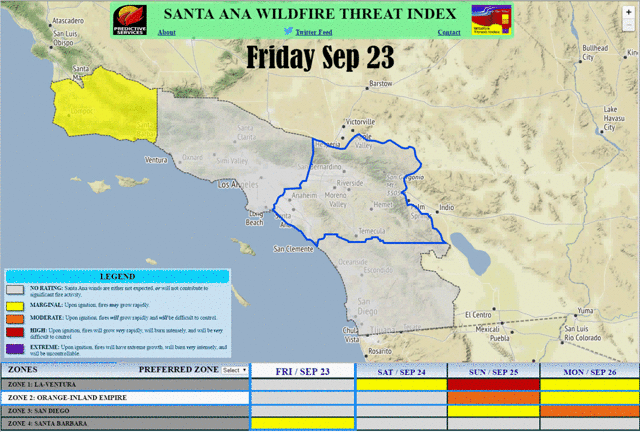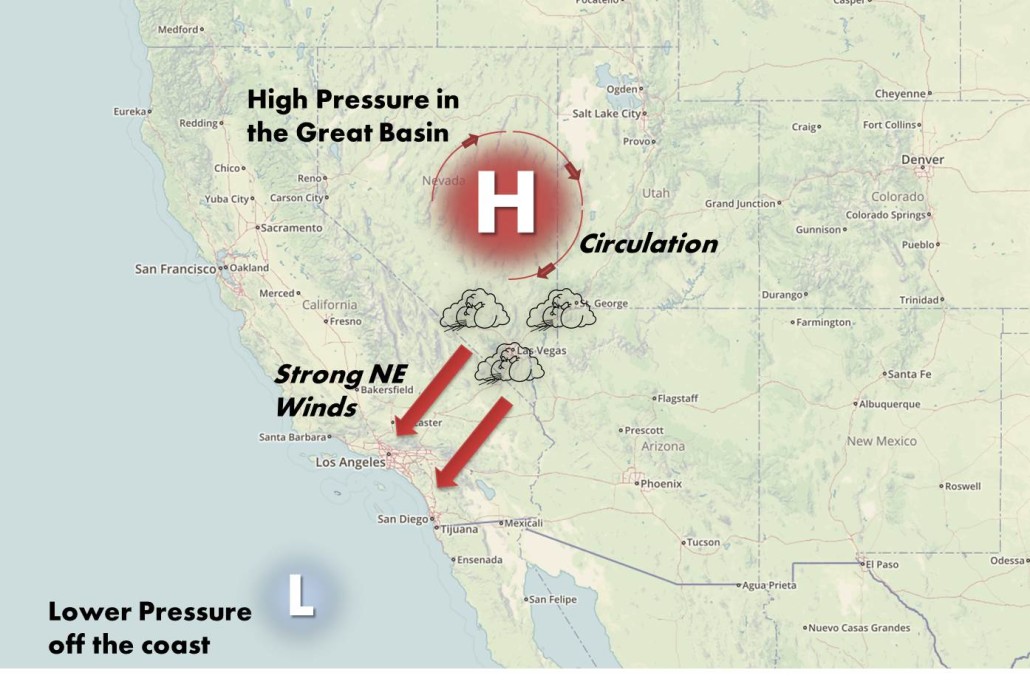Santa Ana Winds
Annually, the onset of the fall and winter seasons brings the highest chance for Southern California’s famed Santa Ana winds. Santa Ana air mass conditions can exist at any time in which the Great Basin tends to be cooler than Southern California. Typically, this period is between September and May. Santa Ana events garner the most attention in September and October because of unique aspects of the Southern California climate.
By the time the Great Basin starts its fall cooling, Southern California has already experienced a summer’s worth of hot, dry weather. In October, the Great Basin is cooler than the coast but still relatively warm compared to later in the winter. The resulting warm Santa Ana winds reach sea level very hot and extremely dry. The sizzling winds then turn the dry chaparral of Southern California into explosive fuel. Some of California’s largest and costliest fires have taken place in these conditions.
This Weekend’s Outlook
This weekend (9/23-9/25) marks the first such event this fall. The strong winds begin today in San Luis Obispo and Santa Barbara and will move their impact southward down the coast through Monday. Red Flag Warnings have been issued ahead of the event for the much of Southern California’s Mountains and Valleys. Winds are forecast to reach 35-45 mph today in the valleys and along the coast, gusting to 55 mph in the mountains. In addition, drying and heating will intensify through the weekend with many areas dropping into the teens and single digits for relative humidity (with poor overnight recoveries).
In Los Angeles, the peak period of the event is expected Saturday Night into Sunday, when temperatures will increase into the 90s and lower 100s. Recent soaking rains temporarily reduced the large fire potential at higher elevations in San Diego. But the prolonged drying expected through the weekend will result high potential for wildfire activity on Monday, especially across the lower elevations and coastal areas where less rainfall occurred. By Tuesday, the high pressure over the Great Basin will move eastward and its influence will diminish.

Predictive Services Santa Ana Wildfire Threat Index for the weekend
Sources:
http://sawti.fs.fed.us/ – Santa Ana Wildfire Threat Index (SAWTI)





One Comment